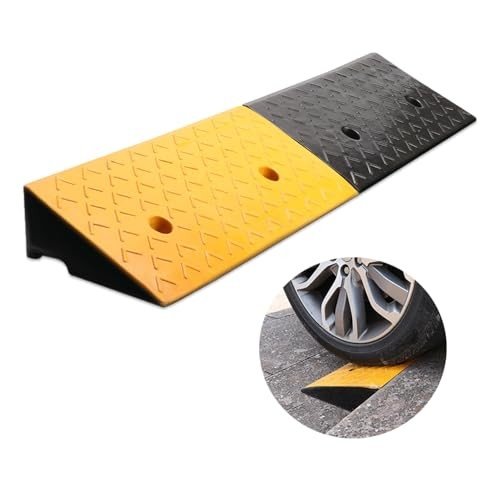
Movable Wheelchair Ramps
Add a review FollowOverview
-
Sectors Health Care
-
Posted Jobs 0
Company Description
10 Unexpected Mobility Ramps Tips
Mobility Ramps for Homes: Enhancing Accessibility and Independence
As society continues to evolve towards inclusivity and availability, mobility ramps have become important fixtures in many homes. These ramps not just offer a method of entry for individuals with mobility difficulties but also promote independence, safety, and convenience. This post looks into the numerous elements of mobility ramps for homes, assisting homeowners through their types, benefits, installation considerations, maintenance, and often asked questions.
Comprehending Mobility Ramps
Mobility ramps are created to help with the motion of people using wheelchairs, scooters, or other mobility aids. They enable simpler access to homes, garages, and exit points without the requirement for substantial physical effort or help.

Key Benefits of Mobility Ramps
-
Independence: Mobility ramps empower individuals to go into and exit their homes without counting on support, promoting a sense of independence.
-
Safety: An appropriate ramp reduces the threat of falls and injuries that can happen when navigating stairs.
-
Flexibility: These ramps can be built for different environments and can be temporary or long-term services.
-
Home Value: Installing a mobility ramp can increase the general value of a home as it promotes inclusivity.
-
Reduce of Use: Designed for a variety of mobility levels, ramps accommodate wheelchairs, walkers, and people with restricted mobility.
Types of Mobility Ramps
Selecting the right mobility ramps for home ramp depends upon specific requirements, physical space, and budget. Here’s a comprehensive comparison of common kinds of mobility ramps:
| Ramp Type | Description | Pros | Cons |
|---|---|---|---|
| Portable Ramps | Lightweight, easily transportable ramps, frequently made from aluminum. | Easy to keep and move, ideal for temporary needs. | Limited weight capability, may not appropriate for long-term usage. |
| Threshold Ramps | Brief ramps developed to bridge entrances or doorways. | Easy installation, useful for little height differences. | Not perfect for larger stairs or high slopes. |
| Permanent Ramps | Constructed from wood, aluminum, or concrete, these ramps are meant for long-lasting usage. | Strong and long lasting, customizable to numerous lengths and heights. | More expensive and may need planning/building permits. |
| Folding Ramps | Ramps that can fold for simple transport or storage. | Storable and great for several usages. | Possibly less stable than irreversible options. |
| Modular Ramps | Pre-fabricated sections that can be put together to develop a customized ramp style. | Easy to install and rearrange, versatile to various spaces. | May have a greater upfront expense compared to other ramps. |
Installation Considerations
Prior to adding a mobility ramp to a home, numerous elements require to be thought about to make sure optimum functionality and security:
-
Space Assessment: Measure the location where the ramp will be set up, accounting for existing structures and paths.
-
Building Codes: Familiarize yourself with local building regulations and policies to guarantee compliance, especially for irreversible ramps.
-
Slope Ratio: The Americans with Disabilities Act (ADA) recommends a slope ratio of 1:12 for wheelchairs. This suggests for every single inch of vertical increase, there ought to be at least 12 inches of ramp run.
-
Material Selection: Choose a product that is durable and weather-resistant to lengthen the ramp’s life-span.
-
Surface area Texture: Ensure the ramp has a non-slip surface area to reduce the threat of accidents, particularly in severe weather condition.
-
Handrails: Consider installing hand rails for additional assistance, particularly on longer ramps or those with steeper inclines.
Upkeep of Mobility Ramps
Preserving mobility ramps is important for ensuring security and longevity. Here are some ideas:
-
Regular Inspections: Inspect the ramp often for damage, wear, or loose bolts that might impact stability.
-
Cleaning up: Keep the ramp clear of debris, such as leaves and snow, to prevent slipping threats.
-
Surface area Repair: Address any surface problems, such as splitting or splintering, in wood ramps immediately.
-
Repaint if Necessary: For metal ramps, repainting can help avoid rust and deterioration.
-
Inspect Handrails: Ensure hand rails are firmly secured and can support weight when required.
Regularly Asked Questions (FAQ)
1. Do I need an authorization to set up a mobility ramp?
Yes, depending upon regional regulations, a permit might be required, specifically for irreversible ramps. It’s recommended to contact your regional structure authority.
2. How much does a mobility ramp expense?
The cost of mobility ramps differs commonly based on the type, materials, and setup requirements. Portable ramps can start at a couple of hundred dollars, while permanent ramps can range from ₤ 1,000 to ₤ 5,000 or more.
3. Can I set up a ramp myself?
While some portable ramps are easy to set up, irreversible ramps typically need professional setup to guarantee security and compliance with structure codes.
4. How do I identify the right slope for my ramp?
Follow the ADA standards of a 1:12 slope ratio for wheelchairs. Additionally, consider the particular needs of the user and the space offered.
5. What products are best for outside ramps?
Aluminum, treated wood, and concrete are popular options for outside ramps due to their sturdiness and resistance to climate condition.

6. Exist insurance coverage benefits for installing mobility ramps?
Some insurance coverage policies might cover mobility modifications, including ramps. Always talk to your insurance coverage supplier for coverage details.
In conclusion, mobility ramps represent an essential element of home availability, cultivating self-reliance, safety, and inclusiveness. By comprehending the various types available, considering installation requirements, maintaining them successfully, and seeking responses to typical questions, property owners can guarantee a supportive environment for those with mobility challenges. Making the best options relating to mobility ramps can considerably enhance the quality of life for individuals and their families.


